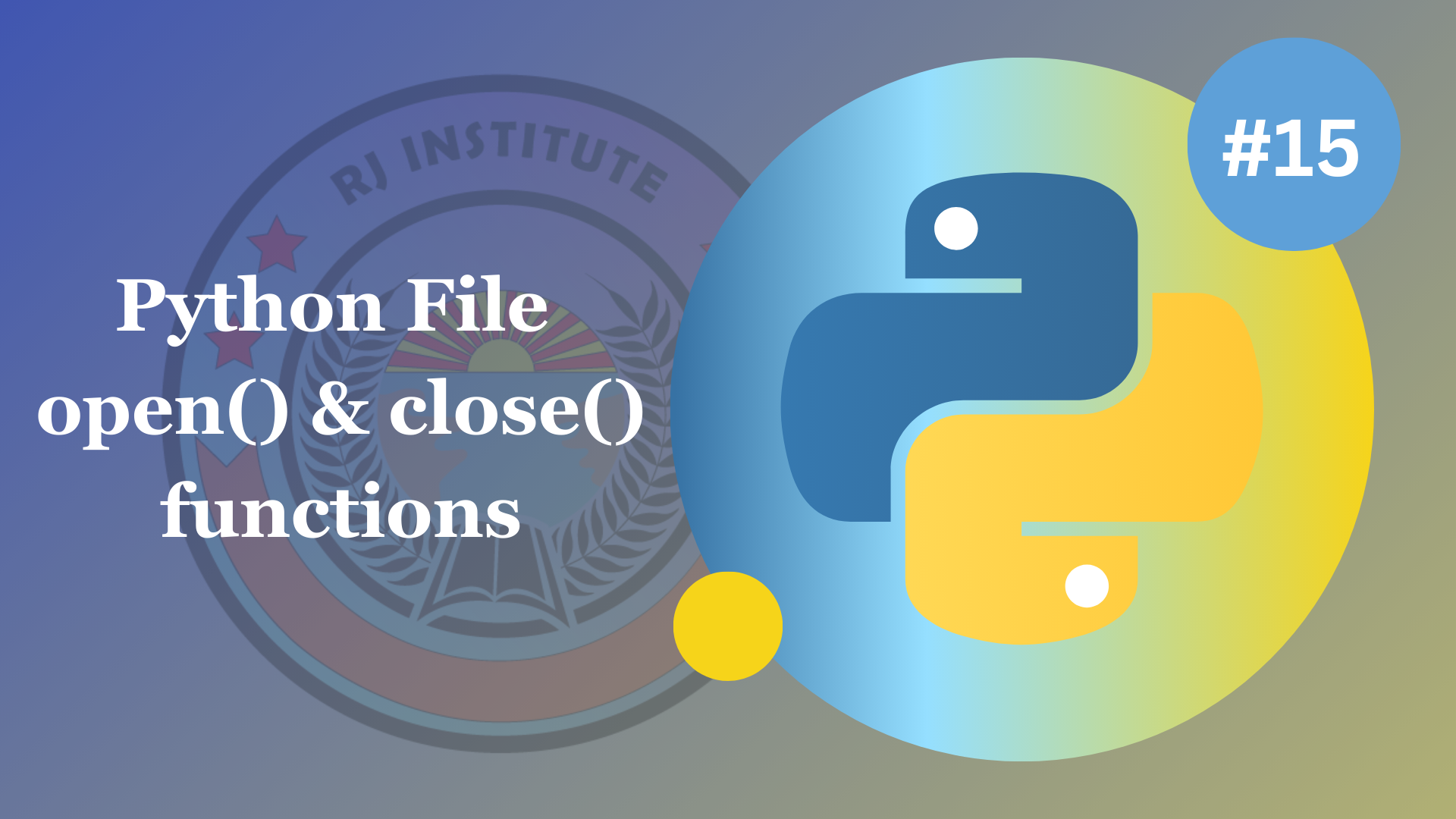

TOPIC: Python File - open() and close() functions
open() function:
The open() function is used to open files in Python. It takes two arguments: the filename (including
the path) and the mode in which we want to open the file.
The second argument to open() specifies the mode for opening the file. Common modes include:
"r", "w", "a", "b". We have already discussed the modes in the previous blog Python File IO Basic.
Example for opening a file for reading and using the read() function:
It's recommended to use the with statement with open(). It ensures that the file is automatically closed when we're done, improving resource management and preventing memory leaks. The open() function is a fundamental tool for file I/O in Python. It allows us to work with files in different modes, read and write data, and ensures proper resource management through the with statement.
close() function:
In Python, after opening a file using the open() function, it's essential to close the file when
you're done using it. This is done using the close() method of the file object.
The close() method is called on a file object, and it releases system resources associated with the
file. Once a file is closed, you can't read from or write to it any longer.
Example for opening a file for reading and using the close() function
Closing files is an important practice in Python to ensure resource efficiency, data integrity, and
access to files by other processes. It's a best practice to use the with statement, as it
automatically closes the file, even in the event of an exception, making file handling more
reliable.
Importance of Closing Files After Opening:
Code as discussed in the video:
You can copy and run this code